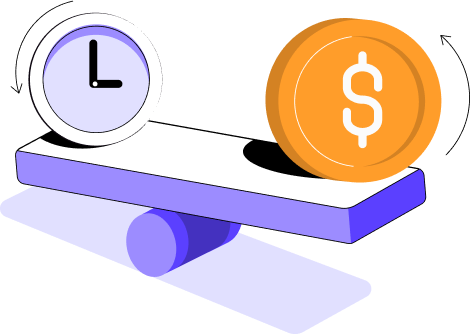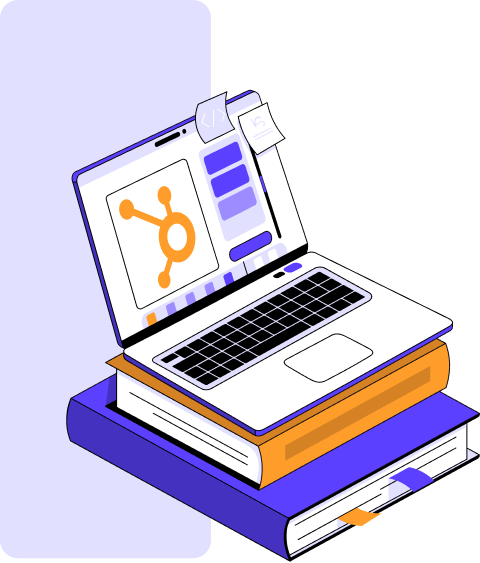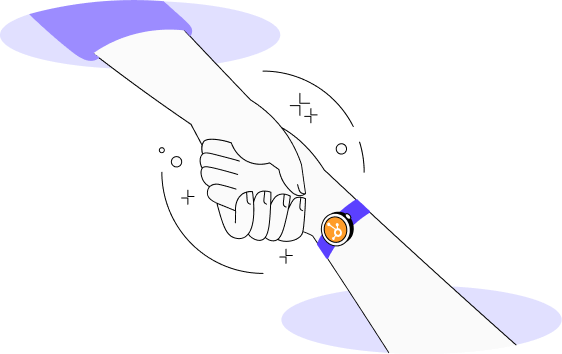HUBSPOT CRM SUITE
CRM Suite
HubSpot CRM Suite: Solving Business Challenges
If you're facing challenges like siloed data, disjointed tech stacks, limited lead routing, lack of transparency and consistency, or existing software limitations in your business operations, you're not alone. These are common issues that many businesses confront. HubSpot's CRM Suite Suite, a comprehensive business solution, can address these problems quickly and effectively.
Here's how Kongo can help you with your HubSpot implementation:
Implementation:
Breaking Down Data Silos
Siloed data is a significant issue in many businesses. It refers to information isolated in separate systems, departments, or formats, which makes it hard to analyse and use effectively.
- HubSpot CRM Suite offers a central data repository, allowing every team member to access data from one unified system.
- All interactions with customers are tracked and stored in a single location, ensuring that everyone in your company has access to the same data and can understand the complete customer journey from acquisition to post-sales service delivery.
Unifying Siloed Departments
The departmental silos are as problematic as data silos. It happens when departments within a business operate independently, which can result in inefficiencies and miscommunication.
- With HubSpot CRM Suite, departments can work more cohesively.
- Integrating sales, marketing and service data, allowing seamless communication and collaboration.
- The result is more coordinated efforts, reducing redundancies and increasing productivity.
Harmonising Disjointed Tech Stacks
A disjointed tech stack can slow down workflows and make data analysis more difficult.
- HubSpot CRM Suite's robust integrations and open APIs can help you push towards a unified tech stack. It connects with a myriad of other software solutions, such as email clients, social media platforms, eCommerce systems, ERP platforms and more.
- By unifying your tech stack, HubSpot can streamline processes, reduce software conflicts, and improve data analysis capabilities.
Overcoming Lead Routing Limitations
Effective lead routing is essential for sales efficiency, but many companies face limitations with their current methods.
- HubSpot CRM Suite's advanced lead routing capabilities ensure that leads are directed to the right person or team at the right time, based on custom criteria.
- This system can automatically assign leads to sales reps based on factors like geography, industry, deal size, buying intent, and more, making the sales process more efficient and effective.
Enhancing Transparency and Consistency
HubSpot CRM Suite can significantly improve the transparency and consistency of your business processes.
- HubSpot CRM Suite's advanced lead routing capabilities ensure that leads are directed to the right person or team at the right time, based on custom criteria.
- This system can automatically assign leads to sales reps based on factors like geography, industry, deal size, buying intent, and more, making the sales process more efficient and effective.
Overcoming Existing Software Limitations
Many businesses struggle with software that doesn't meet all their needs.
- HubSpot CRM Suite is designed to be flexible and adaptable, with a wide range of features and capabilities that can be customised to fit your unique business needs.
- Whether it's tracking customer interactions, managing email campaigns, automating marketing efforts, or analysing sales data, HubSpot CRM Suite has you covered, overcoming limitations you may have likely encountered with other software.
All-in-one solution
HubSpot CRM Suite is an all-in-one solution designed to tackle a range of business challenges. By breaking down silos, harmonising tech stacks, improving lead routing, enhancing transparency, and providing robust features, HubSpot can push your business operations to be more effective and efficient
Marketing Cloud (Marketing Automation Software)
As customer behaviour continues to adapt and change, it's vital that today's marketers adjust in step. Marketing professionals are on the hunt for tools that empower them to reach out to customers across a wide range of channels, fostering robust relationships in the process.
HubSpot's objective is to fashion features that bolster customer connectivity across a diverse range of communication pathways, from email, web, advertising, social media, SMS to WhatsApp.
Marketing professionals are progressing towards developing a more refined, journey-focused approach to marketing, reporting presents a chance to measure and enhance return on investment
Marketing Hub aids marketers in tracking revenue by supplying interconnected data, illustrating where customers are in their journey and how to connect with them effectively
Are you ready to kick inefficiency to the curb and embrace simplicity instead?

Sales Cloud (Sales Enablement Suite)
Sales managers are always working hard to remove friction. Patching together multiple point solutions and dealing with their complexity is like trying to run in quicksand - it slows your reps down and stops them closing deals
Consider these facts
This is where HubSpot's Sales Hub Enterprise steps in to power up productivity, speed up deal cycles, and put the human touch back into the sales process
On average, sales reps have to grapple with 13 different point solutions
Reps spend a massive 41% of their working day doing anything but selling
Businesses take a hit of 38% each quarter due to lost productivity
With HubSpot Sales Hub, you can:
Give your sales team back their time, enabling them to sell better and faster
Boost each rep's productivity, meaning no need to increase your team size
Lower your total cost of ownership with a comprehensive all-in-one solution
Deliver a seamless customer experience with a universal contact record
Encourage CRM adoption with a platform that's not just easy to use, but can be customised to your specific needs
Service Cloud (Customer Service Management Platform)
In an era where organisations are striving to accomplish more with fewer resources, the time of front-line agents is an invaluable and limited commodity. Efficient ticket resolution is paramount
HubSpot is committed to enhancing the help desk experience for agents and customer service leaders, making it a seamless experience with CRM
When service agents are connected with sales and marketing teams within HubSpot, extraordinary things occur. We're diligently harnessing the power of HubSpot's automation engine to create superior routing, improving the experience for both agents and customers alike


Data Migration
CRM (Customer Relationship Management) data migration is the process of moving data from one CRM system to another. It's a critical project task when migrating to HubSpot or merging systems due to business expansion or acquisition.
-
Data Audit
We start by reviewing your current datasets. We help you identify what data needs to be moved, which can be archived, and what should be deleted. This is a great time to clean up your data and get rid of any redundancies, irrelevant data, or duplicates.
-
Define the Data Map
We identify where and how data will move from your current system to HubSpot. This data map is essentially a plan that outlines how fields in the old system correspond to those in the new system. It's crucial to ensure that the data in the old system fits well with the structure of your new HubSpot CRM.
-
Prepare HubSpot
Set up the necessary properties, record views, workflows, and any custom configurations in HubSpot to accommodate the incoming data. It's important that your HubSpot instance is ready to receive and store the data correctly.
-
Perform a Test Migration
We action a small-scale, pilot migration with a subset of your data. This allows you to identify any potential issues or errors before we migrate all of your data.
-
Migrate the Data
Once you’re satisfied that everything is set up correctly, and your test migration was successful, Kongo will proceed with the full migration. It can take anywhere from a few hours to several days, depending on the volume of data and complexity of the migration.
-
Validate the Migration
After the migration, we check the data in HubSpot to ensure everything has been transferred correctly and is functioning as expected. This may involve spot-checking records, generating reports, and getting feedback from your key stakeholders.
Keep in mind that data migration can be a complex process, and each migration may have unique requirements or challenges. It is critical to work with an experienced CRM consultancy like Kongo to assist in the process.

Training
Sales managers are always working hard to remove friction. Patching together multiple point solutions and dealing with their complexity is like trying to run in quicksand - it slows your reps down and stops them closing deals
Training tailored specifically to your needs
Kongo offers the flexibility to pick and choose learning objectives that best align with your business goals and implementation of HubSpot. We take the time to understand your business and people, providing HubSpot training tailored specifically to your needs.
Balance of learning and doing
Your team can enjoy the convenience of learning at a pace that suits their work schedule. Our flexible delivery ensures that your HubSpot training enhances, rather than disrupts, your business operations. With Kongo, you get a balance of learning and doing – all on your own terms.
HubSpot Support by Kongo
We're committed to helping you make the most of your HubSpot setup and gain deeper insights into your operations post-launch.

With Kongo, you're not just getting a service, you're gaining a partner
Whether it's crafting new campaign materials, building fresh workflows and reports, or adjusting to operational demands that crop up during the 12-month project, we've got your back
Choose Kongo for our fixed-cost HubSpot implementation services, and rest easy knowing you're fully supported for an entire year
Don't let your team drown in technical queries or let frustrations hamper their HubSpot experience. Our unlimited phone and email support is always at hand to keep you moving forward.



